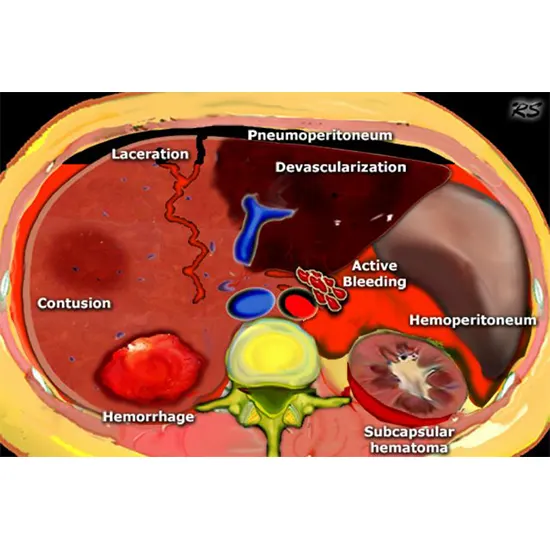
A CT scan, sometimes referred to as a computed tomography scan, is a type of medical imaging procedure that produces fine-grained cross-sectional images of the body using X-rays.
What Is CT Scan?
A CT scan, sometimes referred to as a computed tomography scan, is a type of medical imaging procedure that produces fine-grained cross-sectional images of the body using X-rays. Images from the test depict the internal anatomy of the body, including the bones, organs, and soft tissues. A lot of medical disorders can be diagnosed and monitored using CT scans.
A CT scan is performed while the patient is lying on a table that slides into a device known as a CT scanner. Several X-ray images are captured from various angles while the scanner circles around the body.
To create detailed cross-sectional photographs of the body, a computer merges these images. You can print these photographs out or put them on a CD in addition to seeing them on a computer screen.
Cancer, wounds, infections, and illnesses are just a few of the ailments that are frequently diagnosed by CT scans.
Radiation therapy, surgeries, and biopsies are just a few of the techniques they are utilized to direct. A crucial tool in contemporary medicine, CT scans are a non-invasive, painless procedure that yields incredibly detailed images.
Role Of CT Scan In Trauma.
A diagnostic imaging procedure called a CT (computed tomography) scan creates finely detailed images of the inside organs of the body using X-rays. CT scans are essential in the evaluation of the severity of injuries and the development of effective treatment regimens in the case of trauma.
These are some of the main functions of CT scans in trauma:
Accuracy and Quick Diagnose
Time is of the essence in trauma cases, so an immediate and precise diagnosis is crucial. CT scans are a quick imaging method that generates accurate images of the body. They are capable of identifying fractures, hemorrhage, and organ damage in traumas.
Accurate treatment strategies, such as surgery, immobilization, or observation, are guided by the detailed images created by CT scans. CT scans assist medical professionals in making quick and knowledgeable decisions on patient treatment.
How to Recognize Fractures and Dislocations
CT scans are particularly useful for spotting fractures and joint dislocations. High-resolution images of the bones and joints are produced, making it simpler to spot and pinpoint fractures or dislocations.
When X-rays cannot clearly show the degree of an injury in a complicated fracture, CT scans are extremely helpful. Accurate fracture and dislocation diagnoses are crucial for developing effective treatment strategies, such as immobilization, surgical intervention, or physical therapy.
Considering Internal Organ Damage
Internal organ damage to the liver, spleen, and kidneys can be evaluated with CT scans quite successfully. During a physical examination, these injuries might not be obvious, but CT scans can precisely identify and pinpoint the injury.
CT scans create detailed images that aid medical professionals in determining the best course of therapy, which may include non-surgical intervention, observation, or surgery.
Keeping an eye out for problems
Patients who have experienced trauma may be at risk of experiencing side effects like bleeding or infection. CT scans can be used to check for these issues and determine the best course of action.
For instance, CT scans can find bleeding that may need surgical intervention, or they can find an abscess or infection that may need antibiotic treatment or drainage.
Observational Assessments
When patients who have suffered serious injuries are being monitored, CT scans are commonly used. These scans can aid medical professionals in tracking the healing process and evaluating the efficacy of treatment regimens.
The use of CT scans can also be used to identify any problems or new injuries that may have arisen following the initial incident.
The assessment and treatment of severe injuries depend heavily on CT scans. With the use of these scans, injuries can be quickly and accurately diagnosed, fractures and dislocations are located, internal organ damage is assessed, complications are watched for, and the best course of treatment is suggested.
When it comes to trauma, time is frequently of the essence. CT scans give medical professionals the knowledge they need to quickly start the right treatment plans and enhance patient outcomes.









